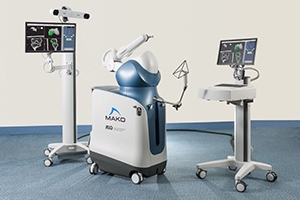Hip replacement surgery can be a life-changing step towards significantly reducing hip pain and improving your mobility. Whether it’s a hip fracture or hip arthritis that has prompted your decision, before you undergo the surgery you must get your home ready for your return. Here’s a checklist you can follow:
- Rearrange Furniture: This should be done with the aim of giving yourself a wide pathway to move around your house when using a walker or some other assistive device.
- Secure Stair Railings: It is best that all the stairways have sturdy railings that extend a few inches beyond the bottom step so you can support yourself when getting on or off the stairs.
- Eliminate Tripping Hazards: Remove all loose rugs and tuck electrical cords away from walking spaces so you are less likely to trip and fall over them.
- Choose a Comfortable Chair: Your chair should have strong arm rests that you can use to help you when sitting down or getting up. The height of the chair seat should be such that your knee joint is slightly lower or at the same height as your hip joint to reduce hip pain or discomfort.
- Keep Essential Items within Easy Reach: Place everyday items such your phone, reading glasses, toiletries, or clothes in new locations that are easy to reach.
- Proper Lighting: Your living space, passageways, and stairways should be well lit. This will reduce the likelihood of bumping into something you can’t see due to poor lighting. Consider placing a table lamp close to your bed to avoid having to get out of bed in the dark.
- Kitchen Safety: Store kitchen utensils in shelves that are easily accessible and use a kitchen cart when moving hot or heavy items. If possible, consider preparing a few meals that can be stored in the refrigerator before undergoing surgery.
- Bathroom Safety: To reduce the risk of accidentally slipping and sustaining a hip fracture in the bathroom you should install grab bars, a raised toilet seat, and nonslip bath mats on the bathroom floor.
- First-floor Sleeping Space: If your bedroom is on the second floor, you should consider creating a temporary sleeping space on the first floor to avoid stressing your new hip for a few weeks or months.
- Seek Assistance: Enlist the help of friends and family to do any heavy-duty chores around the house or to drive you to your follow-up appointments during the first few weeks or months after the surgery.
By planning ahead and checking off all the items on this checklist, you can be confident in the knowledge that your home is a safe place for healing and recovery after hip replacement surgery.
Dr. Domb is a nationally-recognized orthopedic surgeon specializing in sports medicine and minimally invasive surgery of the hip, shoulder and knee. Patients from across the country consistently travel to Chicago to seek Dr. Domb's expertise. For more information please call (833) USA-HIPS.




